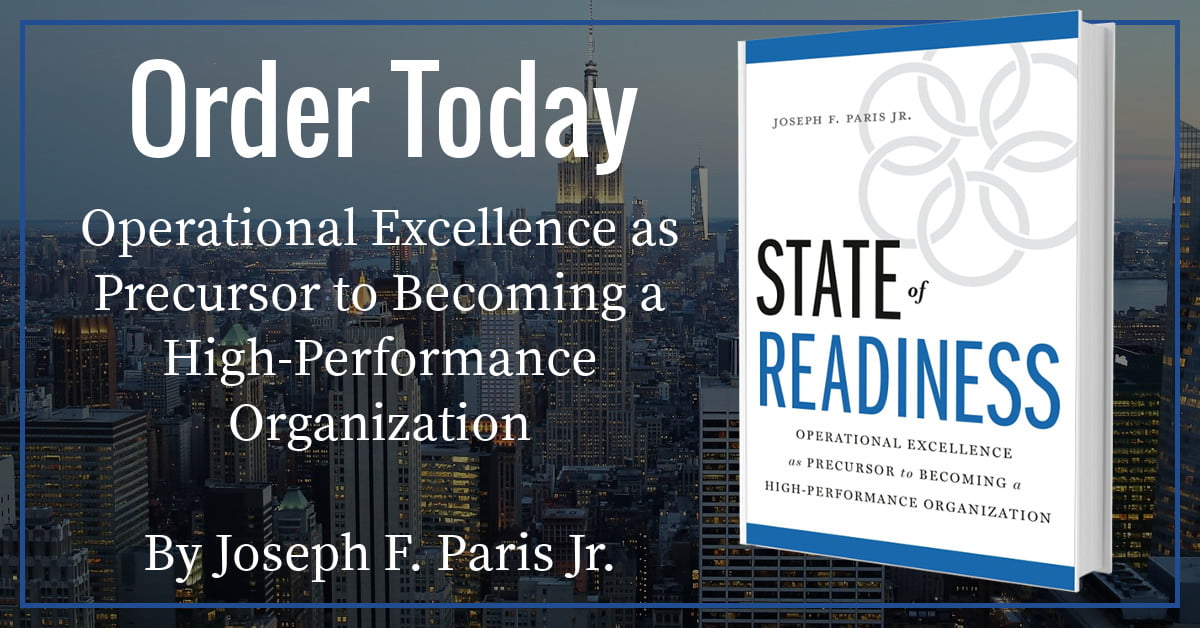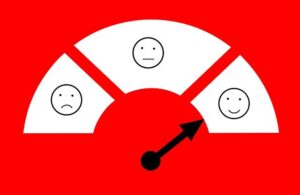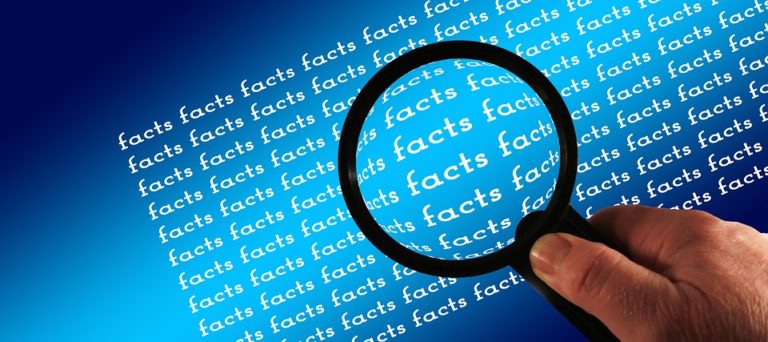Turnarounds; Customer experience real unicorn
We all remember poor customer experience, and we are not afraid to share the poor experiences we have had with others – perhaps even going out of our way to share using social media as the medium for our opinions? How many times have we read bad reviews on hotels or restaurants as compared to good reviews? Furthermore, how many times have our decisions been influenced by reviews (both good and bad)? The experiences shared by others we know, even by total strangers, have an enormous effect on our buying decisions. The reality is not formed by marketing departments as much as they are formed by the opinions of others during the customer experience. In business, as in life, our reputations precede us.
We should probably start by defining “customer experience”.
To me, customer experience has two dimensions:
1) the tangible, which is our perception of the value received for monies spent, and
2) the intangible, which is how we feel after completing a transactional engagement.
When I am booking a hotel room on Booking.com; If it is a large city, I will always select the district I wish to stay first (or use the handy map to show me what is available), followed by the ratings given by those who have stayed there. As a rule, I will not even look at a place to stay if its rating is less than an 8.0. I have even made the decision to not visit a place at all if none of the premises available had an 8.0 or better. Even then, I will read the reviews to see if the things that matter to me most are criticized, such as; good WiFi included at no extra charge, rooms being unclean, or there being excessive noise. Similarly, when I am looking for things to do, or restaurants, I use TripAdvisor in much the same way.
Certainly, many of the complaints I read are due to a miss-alignment of customer expectations versus the ability of the establishment to meet those expectations. For instance, a person should not expect a gourmet meal at a roadside diner nor have the royal treatment at a “no-tell motel”. I dismiss such critical reviews out-of-hand, after all, you get what you pay for (as is normally expected).
However, what I do look for is how the customer was treated. I will almost certainly avoid placing my business at an establishment if I several of the comments refer to the staff as; surly, disrespectful, unhelpful, unfriendly, and so on. It does not cost a company any more to have staff that are professional and pleasant – but it certainly does cost a company if they are not.
Think about your other customer experiences. Which establishments or companies are you merely a customer versus those where you are a fan? Why do you feel the way you do? I would hazard to guess that the companies where you are a fan is because you are treated better than those where you are merely a patron. Then think of your spending habits; are you willing to spend a bit more for a better customer experience – do you actually spend more?
For instance when I was/am in the States, I will not shop at Walmart – I simply refuse to because the experience was so very poor every time I had shopped there in the past (the last time being many years ago). I would rather shop at Target (which has never disappointed) – where I find the entire shopping experience much more inviting than at Walmart and which is why Target wins my business (and I don’t know that it costs any more).
All this got me thinking: How does a company get a reputation for poor customer experience in the first place? Can a company that has a reputation for poor customer experience turn it around?
First: How does a company get a reputation for poor customer experience in the first place?
According to the Small Business Administration (SBA), approximately 50% of the businesses started are still in business after five (5) years. I believe it would be safe to assume that those businesses that survived for this start-up period delivered a customer experience that was at least as good as the competition, and probably superior – after all, they are in a life-cycle phase when they are establishing themselves and are at their very best.
So, of those companies that had superior customer experience, what might have happened such that their customer experience decayed from superior to inferior (or even abysmal).
Almost certainly there was a disruptor that was introduced along the journey of the company which had the power to change the core DNA of the company culture. This disruptor had neither an allegiance to the old company and its ways or it forced the company to change at its core in order to survive.
Mergers and Acquisitions: The first disruptor to explore would be those which are result of one company being acquired by another. The usual scenario is that a larger company acquires a smaller company – and examples of this abound.
Take the story of Chrysler; the merger of Daimler-Benz and Chrysler in 1998, was originally billed as a “merger of equals” with the new company being called Daimler-Chrysler. However, the joke on Wall Street and in the Boardroom of Daimler-Benz in Stuttgart was “the name might be Daimler-Chrysler, but in German, the ‘Chrysler’ is silent”.
The culture-clash between the two companies was immense and the integration was a failure – and the customer experience suffered.
In May of 2007 (just before the financial crisis), Daimler-Chrysler sold most of its stake in Chrysler to the Private Equity firm Cerberus Capital Management at a considerable loss – and Daimler eventually wrote-off the entire remaining investment. Under Cerberus, Chrysler could never gain its footing as the financial crisis became more acute. Eventually, Cerberus lost its investment in the Bankruptcy of Chrysler during the height of the financial crisis as the United States Government and Fiat (under the leadership of Sergio Marchionni) came to the rescue (Fiat eventually acquired all of Chrysler).

Slowly but slowly, Chrysler is improving its reputation. My personal experience (since I rent a lot of vehicles when I travel), is that I do not want to drive a Chrysler because they are just not well built or comfortable. My preference is Ford when I am in the States – in my opinion, the Ford Fusion (Mondeo in Europe) and Mustangs are fine vehicles.
Financial Challenge: A merger certainly can challenge a company to its core, especially the merging of cultures (which rarely actually occurs unless they are closely aligned at the start). But this challenge pales in comparison to a company that faces its death. Under such dire circumstances, a company will sacrifice everything that isn’t absolutely necessary for survival.
Consider a person who is suffering from hypothermia; the body restricts its flow of blood to the extremities first, preferring to devote its energy to the vital organs contained in the torso and the brain. It is very similar when a business faces similar, life-threatening, circumstances.
United Airlines – Trials and Tribulations
Take the sordid story and journey of United Airlines, for example.
United got hit with a triple whammy – the popping of the “Dot-Com Bubble” in 2000-2001, the terrorist attacks of September 11th, 2001, and the fear of the SARS Epidemic in 2002-2003 – which forced it to seek Bankruptcy protection in December of 2002 where it remained until finally exiting in February 2006. During this time and until 2012, the Chairman and President of United was Glenn Tilton who was hired to turn United around.
Tilton’s business experience came from working at Texaco (an oil and gas company) where he worked his way through the ranks to briefly become it’s CEO right before its acquisition by Chevron. If you are not familiar, oil and gas companies are in the commodities business and are more focused on cutting costs than the customer experience – a trait that served United well during bankruptcy, but not so much after it emerged.
And this lack of focus on the customer experience had a severely negative impact on the reputation of United. In May 2008,United was ranked 2nd to last in customer experience by Customer Satisfaction Index and in May 2009, the United States Department of Transportation ranked United 11th of 19 airlines in baggage handling with 3.67 complaints per 1,000 passengers. There was even a couple of videos produced by Dave Carroll as a result of United damaging his guitar and denying responsibility (or compensation).
My personal experience only served to reinforce this popular perception.
When I lived in Binghamton New York, I didn’t have any particular allegiance to any airline. Since there were only a dozen or so flights a day out of the local airport (mostly turbo-props at that), my choices were based on what would get me to my destination the quickest and least expensive rather than the airline I selected. So, as circumstance would have it, I mostly flew USAirways and Northwest Airlines.
But when I moved to Frankfurt Germany in 2010, I found it best to fly a carrier that was a member of the Star Alliance network – of which Lufthansa and United were founding members (along with USAirways, which has since moved to the OneWorld network after its merger with American Airlines).
As such, I started to fly United long-haul across the Atlantic Ocean – and every experience I had was poor. The crew was always surly and the customer experience on United was terrible from start to finish. So, I preferred to fly Lufthansa whenever I could going so far as to ensure that the flight was operated by Lufthansa even if I purchased a United ticket.
And it wasn’t just me and my experience – in 2012, United was responsible for a full 43% of all consumer complaints reported to the United States Department of Transportation. Think about that number, of all the airlines in the United State, and there a great many, United claimed nearly half the complaints.
I put the blame for my poor experiences and United’s poor reputation on leadership.
In 2012, United appointed Jeffrey Smisek – an attorney – as its President and CEO to replace Glenn Tilton. The appointment begs the question, what does an attorney know about running an airline? Apparently, not much. Although Smisek had been in the airline industry since 1995, as General Counsel for Continental Airlines – and certainly he played a prominent role with the merger of Continental and United as well as the subsequent negotiations with the employees – experience with operations and the customer experience was not his strong suit, and it showed.
After quarter-on-quarter earnings disappointments (as other airlines were succeeding), Smisek was forced to resign in September 2015 under a cloud that included alleged favors (which precipitated a Federal Probe) offered by United to the Chairman of the Port Authority of New York and New Jersey, David Samson. There were reports of widespread celebration by employees of United on the news.
I had the need to fly United In November of 2014 and I noticed a change. The crew on this particular flight from Frankfurt to Newark was very kind – the difference was unambiguous, unusual, unexpected, and I noticed immediately. And on the way back from Newark to Frankfurt (different crew), they were very kind again. So I had to ask, why? The answer was that the crews changed and the crew was no longer a “United Crew” (a crew from pre-merger United employed under the attendants contract with United), but a “Continental Crew” (a crew from Continental that was still employed under the terms of the Continental Contract). The difference was huge.
Oscar Munoz was named President and CEO immediately after the departure of Smisek in September 2015 and promised a rebirth for United with an emphasis on improving the customer experience. Unlike his two immediate predecessors, Munoz’s experience included executive roles in operations (being the COO of CSX Corporation) and in the customer experience (being the Vice-President of Consumer Services for AT&T). Unfortunately, Munoz suffered a heart attack just one month later which was serious enough to require a heart transplant. He returned to his position at United on March 7th 2016.
My experience with United over the last couple of years, starting with flying with Continental Crews, has been improving. And others who I know (including some Germans who are fans of Lufthansa) have also remarked on the improvement in the customer experience – not that the customer experience on United is great, but that it is improving.
There is work to be done, but it appears progress is being made.
Leadership Change: The ethos of a company is established by its founders. We can think of the reputations of Hewlett-Packard (HP), International Business Machines (IBM), Apple, Avon, Coca-Cola, and so on. If you are old enough to remember the earlier days of these companies, a certain image comes to mind: HP was known for its scientific devices and engineering prowess, IBM was known for its computers and uptight east-coast professionalism (suits, white shirt, and tie), Apple for its ability to create products and then generate the demand – each had its corporate culture that was established when it was first founded.
The challenge is how that corporate culture translates when there is a change in leadership at the very top – and each subsequent change in leadership. For better or for worse over time, how closely aligned are they to the nostalgia of the company and how strongly do they embrace the existing culture? If there is a deviation, where does it lie?
Take the early history of Apple Computer (now called Apple, Incorporated). Founded by Steve Jobs, Steve Wozniak and Ronald Wayne (who cashed-out his 10% share of the company early for a total of $2,300).
In December of 1980, Apple went public. As a publicly-traded company, Apple had a proper Board of Directors of the most learned and experienced businessmen and technologist to help guide the company on its journey. In 1983, Steve Jobs hired John Scully away from Pepsi-Cola with the challenge, “Do you want to sell sugared water for the rest of your life? Or do you want to come with me and change the world?”
The Board lacked confidence in Jobs’ and Wozniak’s ability to run Apple because of their youth (Jobs was 25 years old and Wozniak was 30 years old) and inexperience in running a company and instructed Scully to place controls on Jobs. Jobs became increasingly agitated and, in 1985, tried to oust Scully – only to have the Board back Scully and finding himself ousted instead.
Although Scully was a mature and savvy business person with talents in marketing and managing the finances of the company, he lacked the technical background necessary to form and execute strategic insights and direction. Incrementally over time, the offerings from Apple under Scully became less attractive and the customer experience decayed. Lacking direction and a compelling vision of the future, Scully and Apple parted ways in 1993.
From 1993 through 1997 was a unique period in Apple’s history which lacked inspiration, innovation and direction – a period of time when Apple was truly rudderless. The CEO from 1993 through 1996 was the unremarkable Michael Spindler, and from 1996 through 1997 the CEO was Gil Amelio. Indeed, the period from 1993 through 1997 was a challenging period of continued decline and perpetual reorganization. Amelio’s tenure at Apple culminated with the acquisition of NeXT and the rehiring of Jobs as an “advisor” in February of 1997. By July of 1997, Jobs was back in charge of Apple – starting as “interim CEO” and just never leaving.
The rest we know – the story of the Phoenix rising from the ashes.
Lack of Competition: Consider the case of internet companies such as Google, Facebook, or LinkedIn. With internet companies, we first need to define who the “customer” is. It is not the person using the systems (as one might expect), but the person who is paying – actually cutting a check to the company – that is the customer.
When each of them first started, their customer experience was very positive and “high-touch”. As a paying customer (even as a user) you could just call their customer service telephone number and get assistance if you had a problem or question. In addition to youth, they also had competition which was formidable (or at least a reasonable threat); Google vs AltaVista and Yahoo (among others), Facebook vs MySpace, and LinkedIn vs XING. And, as such, they had to always scramble to deliver a superior customer experience than their competition.
But, as the marketplace lead for each of these “best in class” companies grew larger, a point was reached where they became the center of gravity. No longer were they competing for customers, but the customers were competing for them. In effect, they became de-facto monopolies in their marketplace. Sure, there might still be competitors, but none are a real threat.
As these companies reach this density and the gap between them and their competition widens, the personal touches start to give way to automation. If you need help, go to the helpdesk portal. If you need to place an order, go to the customer portal.
If you have any issue whatsoever, go to the respective portal. Unless you are spending big bucks, you will never speak to a human being. Try to find a number to call. The customer experience only gets worse if you are not a customer and just a user and need help.
The downside is that people who were once fans of these companies become merely customers. Do I use Google, Facebook, and LinkedIn? Every single day. Am I a fan? No, I think of them more as utilities – I am a fan of them like I am a fan of my electric company. So long as they are functioning as expected, all is good – I expect no more. If they are not, then I wait.
Remember from the beginning of this article; all companies that last more than five years must have (among other things) provided an excellent customer experience – otherwise they would not have lasted the five years. And, somewhere along the way and for a variety of reasons, they stopped providing an excellent customer experience.
Which brings us to the Second Question (remember, there were two);
Can a company that has a reputation for poor customer experience turn it around?
In the research for this article, I searched for a case where a company that provided a poor customer experience turned it around to provide excellent customer service once again.
I found many examples were companies facing financial challenges turned themselves around (or turned-around with some help). But there are very few examples of a company whose customer experience became negative and was able to turn it around to a point where it was providing an excellent customer experience again. And most of those that I did find involved entire industries facing the same challenged at the same time which resulted in a decay of the customer experience they provided before it rebounded.
Some examples;
- The Oil Crisis of 1973 caused by an embargo by OPEC of the sale of oil to the States caught the American automobile manufacturers flat-footed. Overnight, the gas-guzzler being produced became out of favor and the more economical imports from Japan transcended. It would take almost 15 years for the Ford, General Motors, and Chrysler (the “Big-3”) to regain their footing – and then, only partnering with various Japanese companies where they gained technology and knowhow.
- The airline industry after September 11th also swooned in unison – with most (United being a notable exception) bouncing back either directly or in consort with a merger.
- The financial industry, for as well known for providing its idea of excellent customer experience as it was, decayed as the financial crisis of 2007 showed its destructive power (and it has not recovered still).
There are other examples of turnarounds in the customer experience, but all are associated with some credible external disruptor being introduced and effecting all the companies in an industry in unison with the fittest companies surviving the challenge to a similar recovery.
What I could not find, and is the premise for my conclusion to this question, is a case where a company that provided a poor customer experience – for whatever reason(s) – turned itself around (without being acquired) and started to provide excellent customer experience once again.
Perhaps I will reconsider if one of my readers can present a case.
But until then, I am going to make the statement that: Once a lone company (not an industry as a whole) starts to provide a poor customer experience, there is little likelihood that it will (of its own accord and resources) improve its customer experience over time. A lone company’s best hope to improve its customer experience, then, is to be merged into a company that does provide excellence customer experience – or to be given the opportunity for rebirth by effecting a purge of its corporate culture, which can only be the result of a bankruptcy.
About the Author

Joseph Paris is an entrepreneur with extensive international experience. He is the Chairman of the XONITEK Group of Companies, an international management consultancy firm he founded in 1985; and the Founder of the Operational Excellence Society, a “Think Tank” dedicated to serving those interested in the disciplines of Operational Excellence.
In addition, Paris serves on the Advisory Board of the System Science and Industrial Engineering Department at Binghamton University and on the Process Industries Division at the IIE. He is also on the Editorial Board of the Lean Management Journal and a sought-after speaker, guest lecturer and writer.
Connect with Paris on LinkedIn









